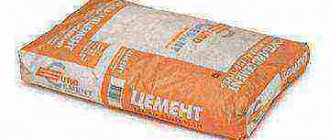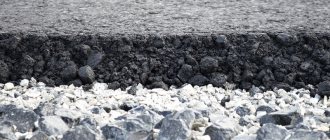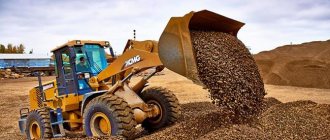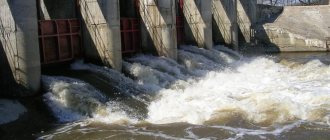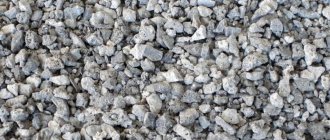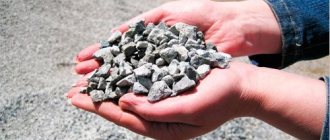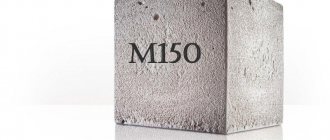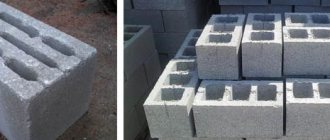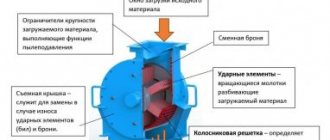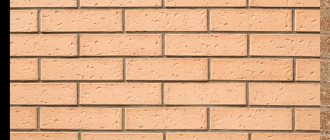DIY decorative crushed stone - a practical novelty
Decorative crushed stone has recently appeared on the construction market - manufacturers of this building material are just beginning to master the technology of painting it on an industrial scale. The technology involves the use of paints that are resistant to external factors, non-toxic and harmless to the soil and plants. The production of colored crushed stone promotes the use of this material in landscape design - these include colored garden paths, rainbow flower beds and flower beds, the creation of all kinds of inscriptions on the ground, filling around the walls of houses and cottages, framing monuments and creating a bright bottom and bank in artificial streams and ponds, design of children's playgrounds and much more.
In addition to external beauty, it is also practical, and in this aspect of the issue, the Europeans, who were the first to master the coloring of crushed stone, certainly know a lot - according to their calculations, the use of such an element in the future significantly reduces the cost of maintaining a beautiful appearance in parks, around monuments and in flower beds. Indeed, backfilling with colored crushed stone is an extremely durable way to solve various problems. Crushed stone inhibits the growth of weeds, prevents the soil from weathering, allows moisture to pass freely and promotes its retention in the soil, and if necessary, it can be collected and used elsewhere or even used for construction purposes.
You can either purchase ready-made decorative material or paint it yourself. When purchasing, be sure to ask what paints were used to give the corresponding color - polymer paints can retain their color for several decades. In addition, do not be shy to look into the bag - the material must be of the same fraction, evenly colored and without signs of premature peeling of paint.
Buy colored crushed stone
Hello! You are on the website Mix-trade.com! We have one of the largest lines for the production of colored crushed stone. You can buy it either directly from us or from our representatives (more than 500 in many cities of the Russian Federation). You can buy colored crushed stone from 15 kg. and up to tens of tons. The average cost is 20 rubles. for 1 kg. painted crushed stone. You can buy colored crushed stone in Stavropol, Krasnodar, Rostov, Moscow and many other cities (almost every one). Call us and we will tell you the nearest point of sale of our product.
How to make colored crushed stone with your own hands - step-by-step diagram
Step 1: Preparing the Material
Manufacturers of crushed stone for construction work do not specially prepare granite crushed stone for painting, so you may end up with stones of very different sizes in the general pile. Manufacturers of colored crushed stone use a special device called a “screen” to separate larger pieces of stone. With its help, bulk materials are sorted into small and large fractions using the screening method. It’s unlikely that you have a “rumble” lying around in the barn, but you probably have a metal mesh. Before you paint the crushed stone with your own hands, pull it at an angle of at least 60° and pour crushed stone with a shovel to the very top to ensure a larger sifting scale. Larger pieces will roll down the mesh, while smaller pieces will fall to the ground underneath the mesh. For painting, it is best to use pebbles about 10 mm long - such crushed stone is most convenient for filling garden paths. Smaller ones will also be useful for decorating flower beds and flower beds, and you can always use large pieces for construction purposes.
Step 2: Painting the crushed stone
The sorted material must be poured into a concrete mixer. By the way, you can make a concrete mixer yourself if you have an unnecessary metal barrel. Paint of the color we need is poured over the crushed stone - you can use both polymer and acrylic paints. To achieve the best color, the volume of paint should be at least a third of the volume of crushed stone loaded into the concrete mixer. Having started the unit, you can calmly rest for the next 40-60 minutes - this is exactly how much time is needed for uniform coloring.
Step 3: Drying the Stones
While your DIY decorative crushed stone is taking on a new color, you can prepare a receiving container if you haven't already. The container is a large box with a mesh stretched around its perimeter. If it is a metal mesh, then it can be stretched a short distance from the bottom of the box; if you are using a regular mesh, stretch it to the very top of the container. Thanks to this device, excess paint will flow freely to the bottom of the box, and the painted material will remain on the mesh.
Remove the crushed stone from the mesh and spread it outdoors to dry, lined with plastic wrap. The paint remaining in the box can be reused to paint a new portion.
Manufacturing technology
Crushed stone of a fraction from 10 to 30 mm is suitable as a raw material, and various paints, as well as various binders, can be used to impart color. The principle of manufacturing the product does not involve any complex operations, as a result of which we obtain a material that is quite in demand in modern construction for creating landscape design - multi-colored stone.
Process video:
1) It is planned to purchase specially selected raw materials, medium-fraction stones, in the range from 10 to 30 mm. When purchasing crushed stone of a specific fraction, there is no need for additional sorting. The material is stored in a bunker, from where it is shipped for painting as needed. Shovels are used for batch loading. Storing crushed stone without cover is not recommended, as the pores of the stone become clogged, and the quality of painting suffers as a result. To apply paint, it is necessary to ensure a dry and clean surface of the material. Based on the volume of transportation, which is most often carried out by KAMAZ, a one-time delivery of cargo equates to a volume of about 14 tons (10 m3).
2) The delivered crushed stone or crumbs are placed in a painting hopper, the function of which can be performed by a concrete mixer. If the standard volume of a concrete mixer is 0.7 cubic meters, and it is not filled to the brim, but slightly above half, then the crushed stone occupies approximately 0.5 cubic meters. Paint is added to the material in one container. To get 2 tons of finished material during a shift, the concrete mixer must work three cycles. Reducing the volume of raw materials loaded into a concrete mixer is impractical: the profitability of production will decrease, since obtaining the same volume of finished product will require a greater number of cycles of operation of the concrete mixer. In practice, it looks like this: 0.2 cubes need to be run 6 times to get a result of 2 tons (in this case, a cube of crushed stone/crumbs is 1.41 tons).
3) Next begins the stage of painting crushed stone or crumbs. The startup time of the concrete mixer is no more than 15 minutes. Upon completion of painting, the material must dry by using, for example, a gas gun.
4) Next, if, for example, granite chips are used, then they are sifted through a vibrating sieve. It is ideal to use a sieve with a tray. After dyeing, each pebble should have a uniform color and be clean. If we compare ordinary and painted crushed stone, the difference looks like this: a ton of colored colored – 22-24 thousand rubles, and a ton of unpainted – 1000 rubles. Of course, the buyer will carefully analyze the quality of the product, so it is unjustified to be careless in drying technology.
5) The finished colored crushed stone or decorative chips are stored using for this purpose the same bunker as for storing raw materials. Storing expensive products without packaging and protective coating is out of the question. It is packaged dry and clean.
6) Tara. Traditional packaging is bags designed for loads from 5 to 20 kg. The packaging process is carried out manually and with the use of an auxiliary tool (shovel). Filled bags are healed using a bag sewing mechanism.
How to paint crushed stone with your own hands - step-by-step diagram
Step 1: Prepare the place for installation
In the place where the material will be poured, it is necessary to remove about 10 cm of the top layer of soil. Pour the soil into a wheelbarrow - there will probably be a place in your garden where you can put it later.
Step 2: Place the borders
If you decide to make a regular garden path, all you need to do is add borders. They can be used as natural stone, or plastic and metal strips. The borders should sit securely on the surface, you can even dig them lightly into the soil.
Step 3: Prepare the base
After installing the borders, it is necessary to pour a layer of sand of at least 5 cm. Level it around the perimeter and pour water for better shrinkage. Let the sand dry a little and proceed to the next stage of preparing the base - lay insulating material over the sand. Manufacturers offer special synthetic materials with ready-made holes through which water flows. You can also use regular plastic film, in which you make a sufficient number of holes in advance for water drainage in case of precipitation. Another layer of sand is poured onto the polyethylene, this time smaller - 2-3 cm.
Step 4: Prepare the stencil
If you are planning to make a path or other surface multi-colored, for convenience, prepare in advance internal borders from strips of metal or plastic. Thanks to them, the crushed stone will not mix with each other, and you, in turn, will be able to form any geometric patterns. This step can be skipped if the material is the same color.
Advantages of colored crushed stone for landscape design
Decorative crushed stone is affordable, durable and harmless. Some of its advantages also include: ► resistance to external factors: heat and cold, direct sunlight, moisture; ► large palette of colors; ► even at high temperatures the material does not release toxic compounds; ► no weeds grow under the backfill; ► no requirements for laying - even a non-professional can fill the area with crushed stone; ► if necessary, simply remove or move to a new location.
The area around a building or a park area covered with painted crushed stone will always look neat and well-groomed.
Technology for independent production of colored crushed stone
1. Cleaning crushed stone from small fragments and debris. A vibrating screen (a special unit for automatically sifting and sorting bulk materials) is ideal for this operation.
2. Separation of crushed stone into fractions. In other words, selecting crushed stone of the same size and sorting it into separate containers.
3. Painting crushed stone. Crushed stone of the same fraction is selected and loaded into a concrete mixer, filling it a little more than half. Paint is also poured there along with the binding material in proportions corresponding to the instructions (about 20-30% of the volume of crushed stone). The duration of one cycle of operation of a concrete mixer can be no more than 15 minutes. After which the painted crushed stone is unloaded and a new portion is loaded.
4. Drying. The contents of the concrete mixer are transferred to a fine mesh sieve, under which you need to place a container into which the liquid dye will drain (thus, it can then be reused). Wait until each pebble is completely dry (at the same time, poorly or incompletely colored pebbles are removed, if any).
5. Packing of painted crushed stone. After it is completely dry, it can be packed into bags (from 5 to 20 kg). At the same time, marking each with information about what fraction and color of crushed stone it contains. The top stitching of the bags can be done with a portable bag sewing machine.
Advantages of decorative crushed stone
- It is an economical building material.
- Prevents the growth of weeds.
- Sprinkling flower beds and beds with it retains moisture.
- Easily removed from the soil.
- Protects the soil from weathering.
- Safe.
- Has a long service life.
- Eco-friendly.
- Has a wide range of colors.
